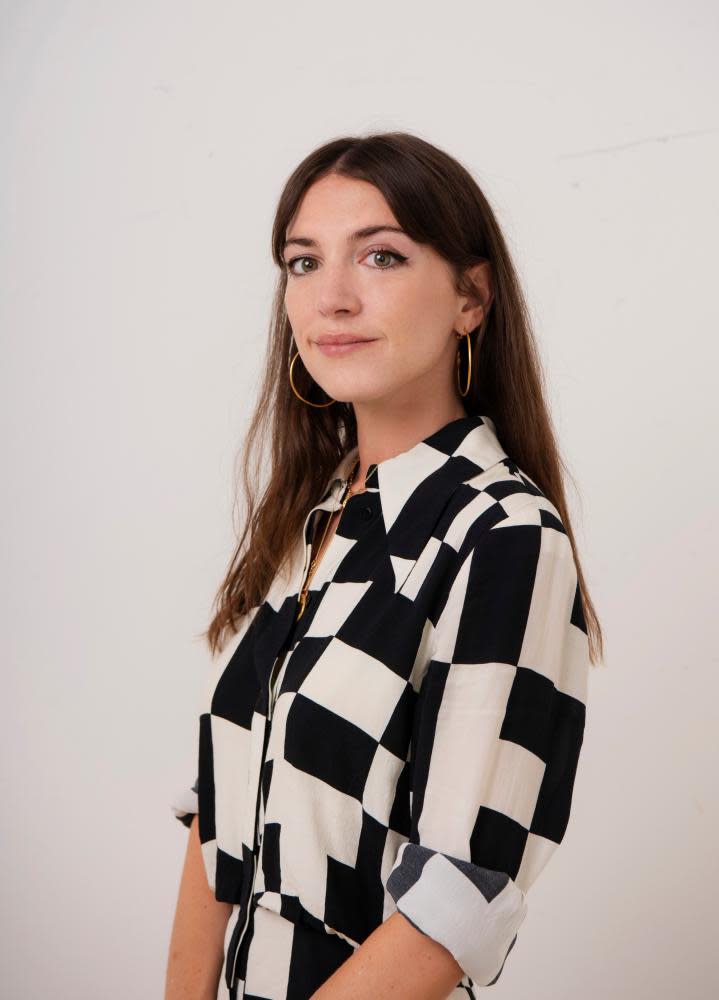The Story of Art Without Men by Katy Hessel review – putting women back in the picture
The Royal Academy of Art has never hosted a solo exhibition by a woman in their main space. The National Gallery was founded in 1824 and held its first major solo exhibition by a female artist, Artemisia Gentileschi, in 2020. The first edition of EH Gombrich’s supposedly definitive The Story of Art featured no female artists in its first edition in 1950 – and one woman in its 16th edition. In 2015, the curator and art historian Katy Hessel “walked into an art fair and realised that, out of the thousands of artworks before me, not a single one was by a woman”.
And so she created this positive, beautifully written corrective, which should become a founding text in the history of art by women. Starting in 1500 and shooting through to artists born in the 1990s, The Story of Art Without Men brings centuries-old figures to life while giving form and gravitas to emergent voices and covering every substantial movement from dadaism to civil-rights-era antiracist art along the way.
The book embraces all artistic developments, but there’s a particular sparkle when Hessel writes about painting
The damning facts speak for themselves, but aside from some introductory remarks the book sails on with an impressive lack of chagrin. It is thick with fascinating details, so that even readers who pride themselves on being exhibition hounds, art historians and gallery hoppers will discover new names. Consider Plautilla Nelli, who entered a nunnery in Florence at the age of 14 in 1538, set up an all-female workshop there, had a stellar career and was one of only four women namechecked by the Renaissance art historian Giorgio Vasari in his Lives of the Artists.
We glide through multiple wars, social crises and political (and artistic) movements with exquisite lightness and focus. Hessel balances her research with an easy, intimate approach to each artist’s work, combining a sense of their historical significance with an extraordinary ability to encapsulate their unique style. Tamara de Lempicka’s ripplingly sensual Group of Four Nudes, from 1925, “fuses elements of the baroque (its high drama and stunning light effects as it thrusts into our space) with a hard-edged industrialism (the robust semi-cubist figures, their angular cheekbones and silvery eyes)”. Contemporary American star Julie Mehretu’s large paintings whirl with “sweeping lines and shapes that disrupt and interweave within the space… fracturing the once-ordered world system”.
Hessel skilfully tags numerous lesser-known names on to more famous ones. We know all about the Bauhaus weaver Anni Albers, particularly after a successful Tate retrospective in 2018. But what about Gertrud Arndt? Born in 1903, Arndt was forced out of the Bauhaus architecture course by the hostility of her male peers and took up photography, experimenting with disguise and female personae – leading us to consider the work of the great Cindy Sherman.

The Story of Art Without Men embraces all significant artistic developments, including photography, installation and immersion, performance art, textile art and the lens-, tech-, text- and media-based works that Barbara Kruger, Guerrilla Girls, Jenny Holzer and others popularised from the 1970s onwards. But there’s a particular sparkle when Hessel writes about painting. She celebrates Jadé Fadojutimi (born in 1993), whose “paintings are full of ecstatic, vivid (almost spiritual) colouring… they seem three-dimensional, with layers of colours that swarm out of the canvas, consuming the viewer. Erupting with drama and theatricality, it’s almost as though you can see something moving under the top layers of paint”. Meanwhile, Flora Yukhnovich, a brilliant young artist who riffs satirically on great 18th-century works, creates “with splinter-like strokes that are simultaneously cartoonish and violent, playful and rigorous, with fleshy, food-like, painterly textures (buttery yellows, cream-like pinks, sugar-coated blues) … constructing gusts of light, air and watery aesthetics out of paint”.
The book is not fully decoupled from traditional western gallery and critical systems. The celebrated non-white and international artists featured here – such as Zanele Muholi, Shahzia Sikander, Wangechi Mutu, Yayoi Kusama and Shirin Neshat – have all shown or been reviewed in leading London, Paris or New York outlets. It will take many more feats of scholarship and advocacy before the centre of gravity of the white, male, western, imperial canon is exploded and women are fully written into global art history. But Hessel has gone further than anyone else in attempting to make a global survey.
She brings to each artwork an attention that is both sober and pleasurable, a sensitive balance of probity, acceptance and fascination: exactly the kind of critical weight that female artists have been denied for centuries. Until things change, The Story of Art Without Men is inspiring and indispensable.
• The Story of Art Without Men by Katy Hessel is published by Hutchinson Heinemann (£30). To support the Guardian and Observer order your copy at guardianbookshop.com. Delivery charges may apply


